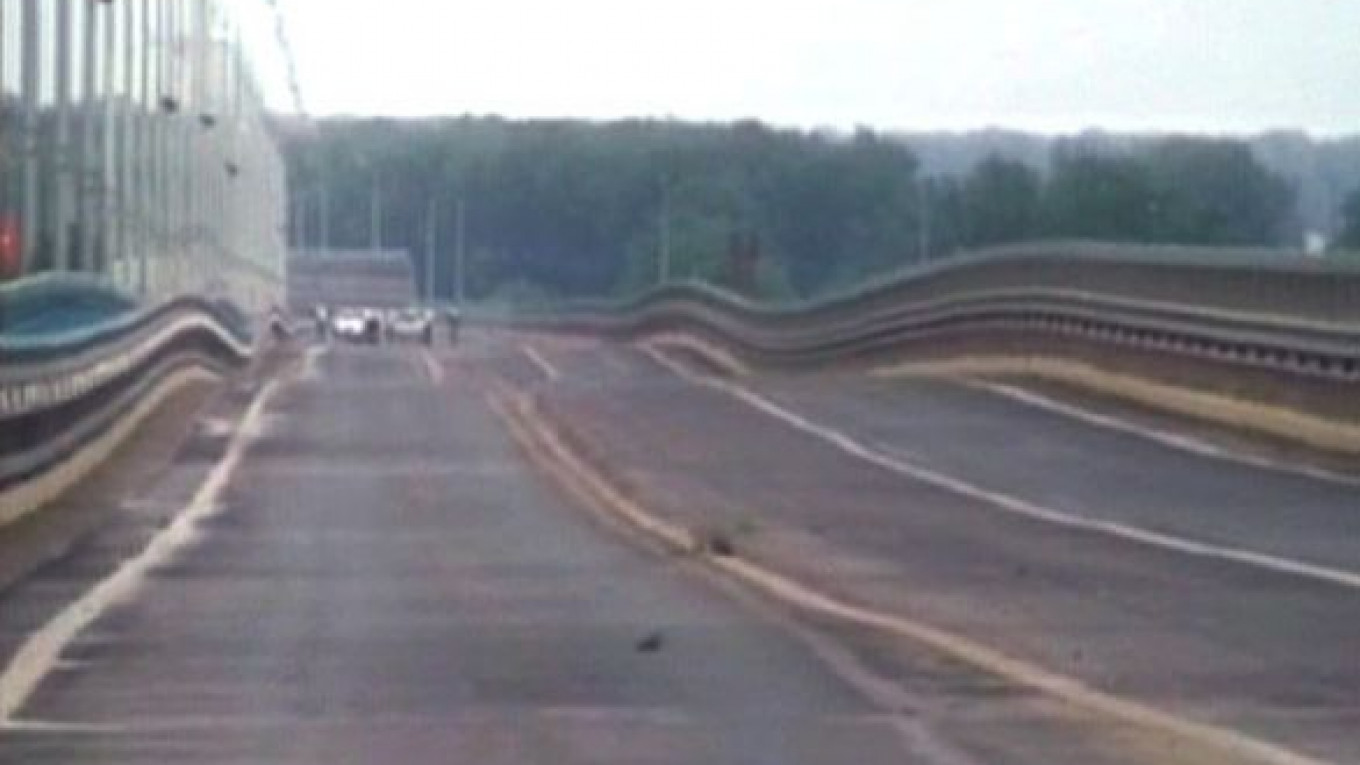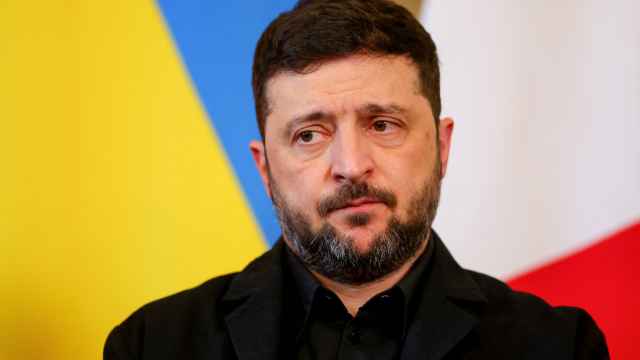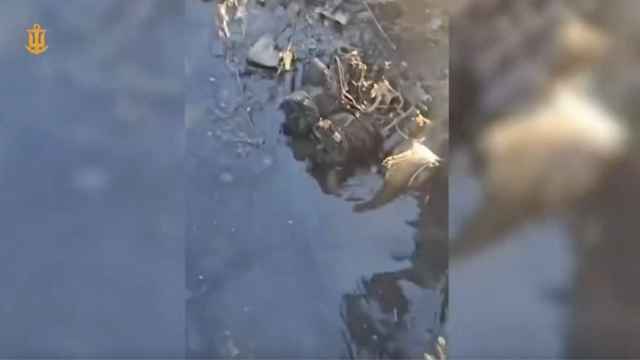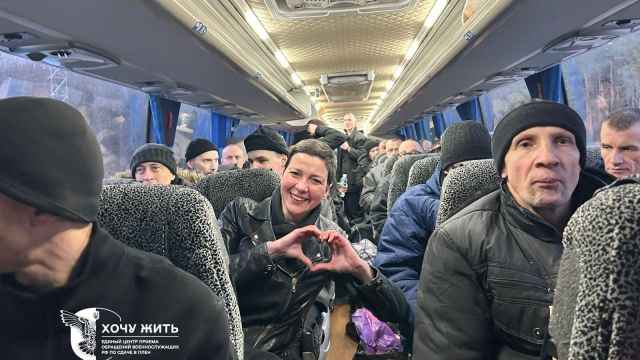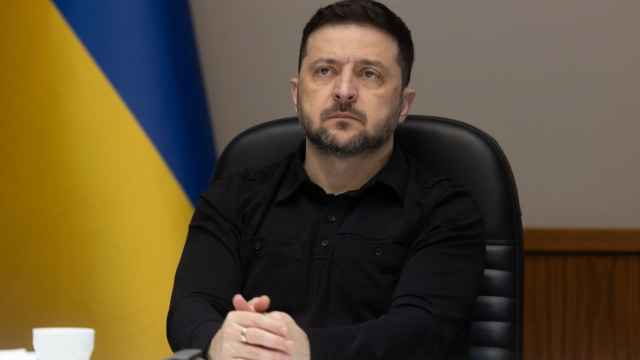A new seven-kilometer bridge over the Volga River has staged a surreal dance, sending cars swirling and bouncing in gale-force winds in a puzzling accident that prompted President Dmitry Medvedev to order an investigation Friday.
The wobbling of the expensive bridge, which began operating in Volgograd eight months ago thanks to the government's much-touted road construction program, is raising questions about the quality of the work bought with the federal money.
No one was injured when the road turned into rolling waves of asphalt for about a half hour Thursday evening. The bridge itself remained intact, proving immune to the buckles that rose up to one meter high, officials said after examining it. Not even the paint cracked, they said.
“I was driving to my country house when my car started bouncing like a ball,” a motorist wrote on a Volgograd Internet forum after being caught in the accident. “I thought something was wrong with the suspension.”
When the bouncing intensified about 20 minutes later, a handful of drivers rushed to the nearest police outpost, he said. The police immediately stopped the traffic.
Deputy Transportation Minister Oleg Belozyorov, who arrived at the scene Friday as the head of a team of engineers, said the bridge most likely had reacted to strong winds that reached a speed of 18 meters per second Thursday.
Volgograd Deputy Governor Igor Pikalov suggested that the reason could have included an earthquake, but Belozyorov dismissed that theory.
“Experts agree that it is the dynamics of the air,” Belozyorov told reporters. “When wind gusts hit a certain resonance zone, they cause these kinds of consequences.”
Wind gusts were the most likely cause of the accident, said Vladimir Parshin, chief engineer at Transmost, a bridge construction company that was not involved in the Volgograd contract. He blamed the wind, despite recognizing that the beam bridge over the Volga River is more robust than suspension bridges that have been known to collapse in stormy weather.
“The spans in the Volgograd bridge are rather long, so theoretically it could be less wind-resistant than other similar structures,” he told The Moscow Times. “In any case, this sounds like a precedent for this type of bridge.”
The wind must have been blowing at a certain angle to cause such resonance oscillations, Pikalov said.
“Specialists believe this is a unique case,” he said.
Medvedev ordered the control department of the presidential administration and the Prosecutor General's Office to look into the design and construction of the bridge, Kremlin spokeswoman Natalya Timakova said.
The bridge — which cost 12.3 billion rubles, or $396 million, mostly in federal funds, to build — complied with all the industry standards, Pikalov said. The contractors collected “all the [necessary] signatures,” he said.
In response to the accident, Volgomost, the general contractor for the bridge, said it had inspected the structure and found it in perfect shape. In a statement on its web site, it described the structure as “one of the most reliable” bridges.
Giprotransmost, a Moscow-based company that designed the Volgograd bridge, could not be reached for comment Friday.
The bridge took 13 years to build because of delays in financing and in 2004 was included in the Federal Roads development program for 2002-2010. The ruling United Russia party volunteered to oversee the construction at the time.
First Deputy Prime Minister Sergei Ivanov opened the bridge at a festive ceremony eight months ago.
The government has been funding construction of roads and bridges under its Federal Roads program. Lately, the program has also been touted as a countercrisis measure.
Belozyorov, the deputy transportation minister, said his engineering team would inspect the bridge in two stages, with the first one lasting several days, and would make a computer model of the bridge during the second stage to asses its wind resistance, a process that might take another 10 to 15 days.
The bridge will remain closed until the causes of the incident are revealed, Deputy Governor Pikalov said.
A Message from The Moscow Times:
Dear readers,
We are facing unprecedented challenges. Russia's Prosecutor General's Office has designated The Moscow Times as an "undesirable" organization, criminalizing our work and putting our staff at risk of prosecution. This follows our earlier unjust labeling as a "foreign agent."
These actions are direct attempts to silence independent journalism in Russia. The authorities claim our work "discredits the decisions of the Russian leadership." We see things differently: we strive to provide accurate, unbiased reporting on Russia.
We, the journalists of The Moscow Times, refuse to be silenced. But to continue our work, we need your help.
Your support, no matter how small, makes a world of difference. If you can, please support us monthly starting from just $2. It's quick to set up, and every contribution makes a significant impact.
By supporting The Moscow Times, you're defending open, independent journalism in the face of repression. Thank you for standing with us.
Remind me later.


